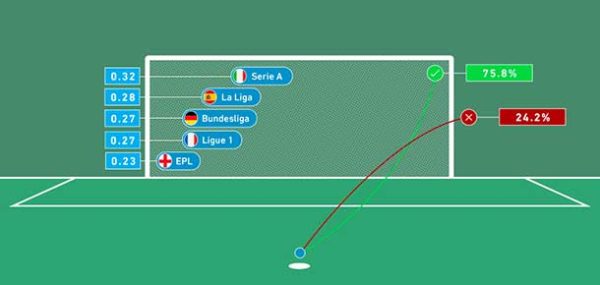Beginner’s Guide: How to Calculate Probability
Probability, as you might have come across is how likely an event can occur out of the total number of possible outcomes. This short guide here is an answer to your questions like: what is probability in general, how to calculate probability in sports betting related to probability and more.
Table of Contents
What is probability in general?
Probability in simple terms is the likelihood of something happening. Understanding the basic theory will also help you in sports betting.
Simply put, it denotes the likelihood of an event to happen, and we can determine it by dividing that likelihood of one or more events that can happen to the total number of possible outcomes.
Let’s see how to calculate probability now. For this, we will study a few of the circumstances that could occur.
CASE 1: How to Calculate Probability of a Single Random Event
– Step 1- Define your events or outcomes: You need to first define the number of events for which you are calculating the probability. This would be the random single event occurring.
Example: If you want to find the probability of the number 3 appearing on the dice, your possible number of events or outcomes is one (1) because we know that 3 can appear only one time out of the six faces of the die.
– Step 2- Define the total number of events or outcomes: Now you need to figure out the total number of outcomes which would be the outcomes that could occur possibly along with the possible event that you want to calculate the probability for.
Example: Considering the above example, the total number of likely outcomes is six because a dice has 6 faces. So any of the face can turn up when you throw it.
Now calculating the probability of getting a three on a dice would include dividing the number of the probable event by the total number of the outcomes:
CASE 2: How to Calculate Probability of Multiple Random Events
– Break the problem into parts: When you are asked about the probability of multiple random events in mathematics, you can break the problem into parts and calculate their separate probabilities.
Example: What is the probability of rolling two dices and getting two consecutive fives?
Let’s break this into two parts. You can easily calculate the probability of getting a 3 on one dice. It would be 1/6 and the probability of rolling another dice and getting a 3 would also be 1/6.
– Multiply the probability of both the events: This means we need to multiply the probabilities we calculated for the single events.
This would give us 1/6 X 1/6 = 1/36 or 0.027 or 2.7%.

CASE3: How to Calculate Probability of the Odds in Sports Betting
In this case, we need to calculate the probability of the specific odds that we desire. We should also not forget that all odds include some margin. The lower it is, the better coefficient, thus the better for the bettor.
When you are calculating sports betting probabilities you need to remember that the odds are heavily based on team statistics, previous game results and the performance of the individual players. If the top team is playing against the lower ranked one, the odds on the favourite will always strongly reflect that.
SOME RULES TO REMEMBER
Here are some tips that will help you solving those tough looking probability equations.
– Check for Mutually Exclusive Events: Before starting the question, give it a thorough study. Check whether the events are mutually exclusive. This means that they shouldn’t occur at the same time. Another word for them is disjoint. If two events are disjoint, the probability of them occurring at the same time is 0.
– Check for Negative Numbers: When calculating any problems, you get an answer as a negative number, be sure that it is wrong. Check all your calculations again to spot and error. You will never ever get a probability in a negative number because the chances of occurring of an event are never negative.
– All the Probabilities adding up to 1 or 100%: The probabilities of all the likelihood events must add up to 1 or their respective probabilities should add up to 100%.
Example: Adding the possibilities of getting a 1, 2, 3, 4, 5, 6 on a dice:
– Probability of an impossible outcome: To represent the probability of an impossible outcome, you need not calculate anything. It is always taken as 0. This means that there is no chance of event happening.
Free tips, odds, the best tipsters and advices. Join us and be part of The StakeHunters Community!




